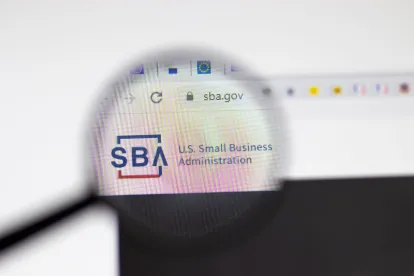On Dec. 19, 2022, the United States Small Business Administration (“SBA” or “Agency”) implemented a final rule that adjusts monetary-based industry size standards (i.e., receipts and assets) for inflation that occurred since 2014. The rule implements three main actions: (i) adding an additional 13.65% inflation increase to the monetary small business size standards; (ii) adjusting three program-specific monetary size standards to account for inflation; and (iii) adjusting for inflation the economic disadvantage thresholds applicable to two separate programs.
Summary of Changes
In accordance with SBA regulations (13 CFR § 121.102(c)), an adjustment to size standards for inflation is made at least once every five years, though adjustments may be more frequent depending on higher rates of inflation. The SBA was scheduled to review size standards in 2024, but a 40-year high inflation rate prompted the Agency to immediately assess its standards. According to the SBA, the Gross Domestic Price (GDP) index increased 13.65% from the fourth quarter of 2018 to the first quarter of 2022, causing the Agency to adjust receipts-based industry size standards by increasing current levels by 13.65% and rounding results to the nearest $500,000 (except for the agricultural industries, which were rounded to the nearest $250,000).
For example, North American Industry Classification System (NAICS) 517410 (Satellite Telecommunications) had a receipts-based size standard of $38.5 million. Following the new rule, the standard has been multiplied by 1.1365, then rounded to the nearest $500,000. Thus, the new standard becomes $44 million. Applicable to the agricultural industry, NAICS 112112 (Cattle Feedlots) had a size standard of $19.5 million. But under the rule, the standard has been multiplied by 1.1365, then rounded to the nearest $250,000. Thus, the new standard becomes $22.0 million.
These adjustments further impact assets-based industry size standards. Currently, there are four industries in NAICS Sector 52, Finance and Insurance, with the size standard of $750 million in average assets: Commercial Banking, Credit Unions, Savings Institution and Other Depository Credit Intermediation, and Credit Card Issuing. Under the change, assets-based size standards have been adjusted and rounded to $850 million.
The SBA also has established size standards on a program basis, rather than on an industry basis. The rule finalizes the SBA’s adjusted monetary-based industry and certain program-specific size standards (i.e., receipts- and assets-based) for inflation that occurred since the previous inflation adjustment in 2014. These include the size standards for sales or leases of government property, stockpile purchases, and the alternative size standard based on tangible net worth and net income for the Small Business Investment Company (SBIC) program.
Lastly, the rule adjusts monetary thresholds primarily used in the 8(a) Business Development program (8(a) BD) and the Economically Disadvantaged Women-Owned Small Business (EDWOSB) program to determine eligibility of applicants and current participants as economically disadvantaged business concerns. These monetary thresholds previously have not been adjusted for inflation, which has caused some small businesses to lose eligibility due to inflation-led revenue growth. The rule aims to reinstate the eligibility of economically disadvantaged business concerns in the following ways:
-
8(a) BD Program: (i) adjusting the net worth of an individual claiming economic disadvantage threshold from $750,000 to $850,000; (ii) adjusting the aggregate gross income (AGI) threshold over the three preceding years from $350,000 to $400,000; and (iii) adjusting the fair market value of all assets (including the primary residence and participant firm) threshold from $6 million to $6.5 million.
-
EDWOSB Program: (i) adjusting the net worth of an individual claiming economic disadvantage threshold from $750,000 to $850,000; (ii) adjusting the AGI threshold over the three preceding years from $350,000 to $400,000; and (iii) adjusting the fair market value of all assets (including the primary residence and participant firm) threshold from $6 million to $6.5 million.
-
Total 8(a) Contracts: Adjusting the sole-source and competitive 8(a) awards threshold for participants (other than one owned by an Indian Tribe, Alaska Native Corporation (ANC), Native Hawaiian Organization (NHO), or Community Development Corporation (CDC)) from $100 million to $168.5 million.
Conclusion
The rule provides relief to federal contractors in a period when inflation has impacted small business operations. Prior to the rule change, many small businesses have felt pressure to either pass on higher costs to their customers or restructure their internal operations. The SBA’s rule aims to alleviate these concerns for small businesses in pursuit of federal assistance.
Timothy McLister also contributed to this article.



 />i
/>i

